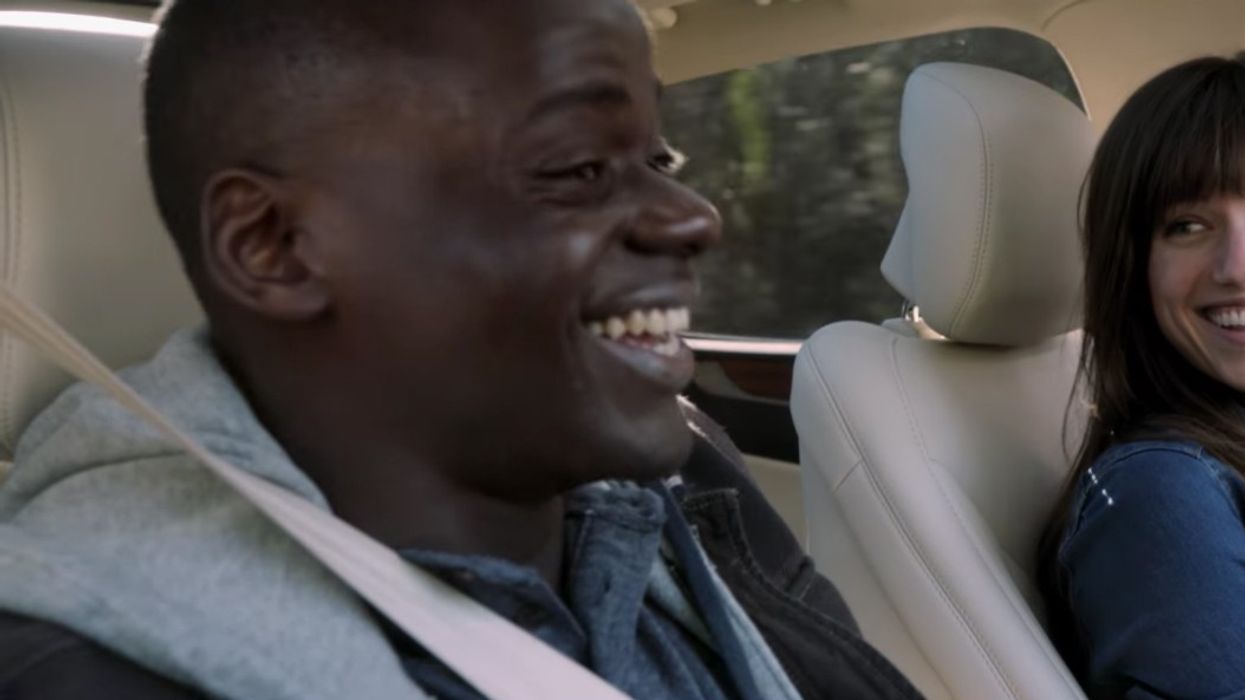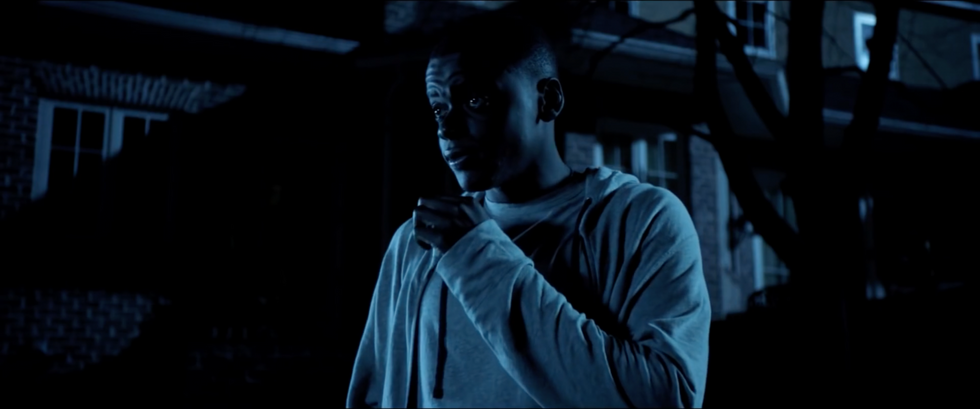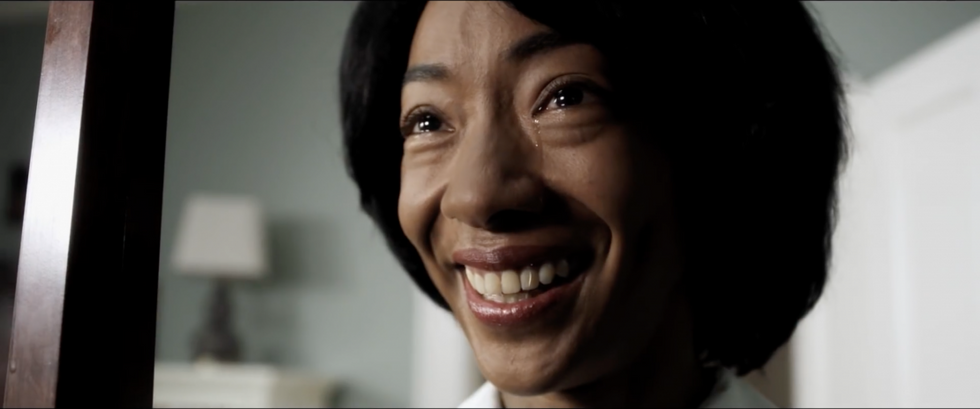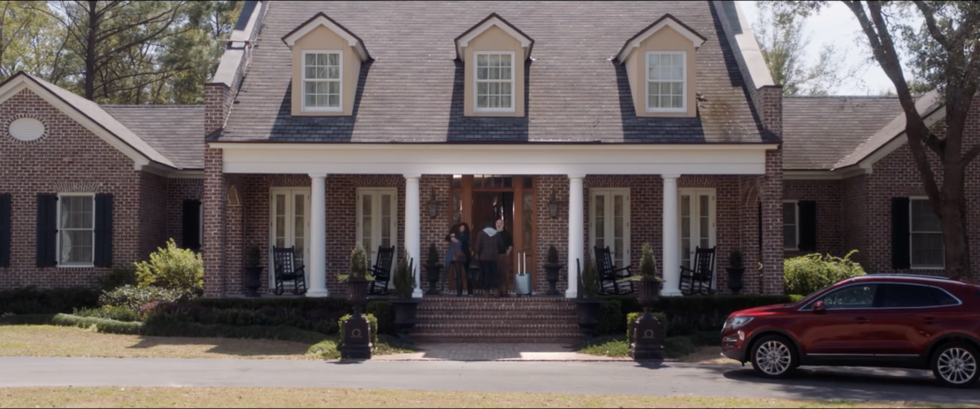How DP Toby Oliver 'Represented Consciousness' to Shoot 'Get Out'
'Get Out' cinematographer Tony Oliver was faced with a challenging, genre-bending film. Here's how he tackled it.

Get Out is the latest in a long line of massive financial successes to come out of the horror genre, but unlike many of its predecessors, Get Out 's success has been garnered through political commentary, as well as its scares and jokes. The movie is an outstanding piece of filmmaking, allowing all audiences to step into the shoes of a black man and experience the micro-aggressions and blatant racism that African Americans face on a daily basis. The film delivers an impeccably written, multi-layered story that audiences have flocked to in droves, making Peele’s flick the first debut film by black director to earn over $100 million domestically.
The movie stars Daniel Kaluuya as Chris and Allison Williams as Rose, a couple who are visiting Rose’s childhood home so that her family can meet Chris for the first time. Rose assures Chris that her family is ardently liberal, but once the young couple arrives, Chris starts to feel as though something is off.
Thanks to Director of Photography Toby Oliver, the film’s visuals build to give us a greater insight into Chris's internal and external struggles. Shot on an ARRI Alexa Mini and a set of Angenieux zoom lenses, chief among what makes Oliver’s lensing so effective is that his lighting and camerawork are designed to perfectly match the story.
Oliver recently sat down with No Film School to chat about grounding a horror film in reality, putting audiences in the mind of a character, and what it means to work on a socially relevant movie.
"[Peele] had really great ideas and he had a vision but he didn’t know every step, especially technically, of how to get there, so my job was to step in and help him find that way."
No Film School: I’m normally not really much of a horror person, but I’d heard such great things about Get Out that I had to go see it, and it was incredible.
Toby Oliver: Yeah, I’ve been talking to people that wouldn’t normally necessarily go see a horror movie who end up really enjoying it. They’re getting something out of it because it touches on other subjects and it’s well-crafted and it’s not just about scares and blood and guts.
NFS: How did you get involved with the project?
Oliver: I’ve had a relationship with Blumhouse since I arrived [in Los Angeles], and Blumhouse was keen to keep working with me since I’d done a reasonable job on projects like The Darkness. It was Cooper Samuelson at Blumhouse, and Gerard DiNardi, one of the movie’s co-producers, who said you’ve got to meet Jordan.
They put us together, and we hit it off over the phone and he sent me the script and it was terrific, so for me, it was a no-brainer. I wanted to meet this guy and have a shot at getting on his movie.
NFS: What did you do in pre-production to prepare for Get Out?
Oliver: Rather than go for an all-out stylized horror look, I pitched a naturalistic approach that grounded the main character in the real world in the beginning, and then when things get crazy towards the end we diverge out of that stylistically. And that’s exactly what Jordan wanted to do. We pushed forward trying to make sure we achieved that in a cinematic way.
I was able to come in and help Jordan realize that vision, because as a first-time director, his experience working behind the camera was minimal. He had really great ideas and he had a vision but he didn’t know every step, especially technically, of how to get there, so my job was to step in and help him find that way.
"I like to give the director as many options and get as many setups in a day as possible, so that they go to the editing room with as many options as we can humanly get."
NFS: How did you settle on the ARRI Alexa Mini and the Angenieux lenses to shoot the film?
Oliver: I love the Alexa. I think it’s the most filmic of the digital cameras. I’ve used it on most of my projects over the last few years, and on this film I switched to using the Mini. It’s lighter, has smaller prints, and is physically smaller, even when you load it up with all the accessories. You get the same quality but you can move it around faster and it’s quicker to change it between different modes.
I like to work fast. I like to give the director as many options and get as many setups in a day as possible, so that they go to the editing room with as many options as we can humanly get. And having small cameras that are a little bit lighter and more compact helps achieve that.
We didn’t choose the zoom lenses straight up because they were faster to use. Jordan had limited experience with lenses and I think, for him, it was just easier to wrap his head around the zoom lens, where you’ve got infinite variability. So I ended up shooting the whole thing on the four Angenieux zooms and it worked really well. It was really flexible for us.

NFS: The film often uses close-ups on people’s faces. What made you decide to use that type of shot so heavily?
Oliver: In any movie, it’s about the characters. What we did a fair bit in Get Out was shoot a close up with the camera just a few inches away from the actor’s face. That gives you a different perspective than if you shoot the same size shot from a few yards away. If you’re ten feet away or two feet away, the shot might be the same size, but it gives you a totally different emotional feeling. Being a little bit closer with a wide angle lens on the characters puts the audience in a position where they’re almost 10 close, and so you feel like the audience is positioning themselves inside the character’s head. You can shoot quite flattering footage of actors from a distance and zoom in on a long lens, but that gives the audience a really different feeling, emotionally, and a different kind of connection to that actor and that performance.
There are these scenes in Get Out, like the scene where the maid comes into the bedroom to explain why she was unplugging his phone, and she comes closer and closer to the camera, and the camera sort of inches back as she makes her way forward towards Chris, keeping the camera literally only a few inches away from her face. And [Betty Gabriel] delivers this amazing performance with the camera right in her face. And that’s something that was one of my favorite scenes in the movie and those elements came together on the day.
During rehearsals, she didn’t come forward at all. She just stood in the doorway and it was a static a scene. I suggested she creep forward and we'll track back with her, because she was building up her performance towards the end and she gets to this emotional crescendo, and then she comes back down again, and to have her walking towards Chris at the same time adds this extra layer to all of that, and it ended up working really well.

NFS: Were there any specific shots that were especially difficult to figure out, or that you were really proud of?
Oliver: The scene where Chris wakes up at night to have a cigarette and he goes and walks down the stairs and through the house until he makes his way outside. We shot that in two long Steadicam takes, so lighting the whole house for that to work was a challenge that required quite a bit of planning. In the film, they’re cutting from the behind shot to the leading shot, which was always the intention, but because you’ve got to hide all the lights and make sure the camera movement is smooth and flowing and appropriate, it’s always a bit of a challenge.
And interestingly enough, the car stuff was really challenging even though it looks quite straightforward and simple on-screen. Jordan really wanted to cover both sides of the conversation at the same time, so we’ve got a camera looking in each side window of the car. Now the problem is that you can’t see the other camera, so we carefully framed it so the other camera was right on the edge of the shot looking the other way. And then he wanted to have the windows up, and often with these kinds of scenes the windows will be down, so the camera has that sort of feeling that it’s inside the car. But you can’t do that if you’re shooting both ways at the same time because you’ll see. So the windows are up and there’s a huge amount of problems in the reflections, seeing the camera. I’ve shot miles of car stuff before, but never where we have to cross-shoot both characters at the same time with the windows up and free-driving. That was a bit of a challenge, but my key grip, Eric Damazio, was great and he was really able to help solve the problem and we made it work.
"The car stuff was really challenging even though it looks quite straightforward and simple on-screen."
NFS: What about shooting the sunken place?
Oliver: That was a challenge because we had to figure out how to do it. You’re going to a representation of a guy’s consciousness who has slipped away through hypnotism. How do you represent that?
To practically achieve that on the stage we had [Daniel Kaluuya] hanging on a wire, which was really uncomfortable, but he was really good about it. So he’s hanging in one spot to create this sense that he’s falling down, and we moved the camera around him because it’s in a black space where we hung big solids all around the scene so it just looked like infinite depth with a bright single light source which is suggestive of the screen that’s above his head. And then the little floating particles were added in in post and I shot most of the falling stuff at a high speed at about 200 frames per second to achieve that semi-sort of underwater feeling but not quite underwater. It ended up working pretty well and Jordan was pretty happy with the way stuff turned out because you imagine something like that in your head and when it comes to life it’s pretty cool.

NFS: How did you come up with the film’s color palette?
Oliver: The idea was that back in the city with Chris’s apartment and Rod on the phone it's generally a cooler, more real feeling, with more natural and desaturated color. Then, when Chris and Rose go to the Armitage’s early in the movie it’s quite warm, and welcoming and sunny, with a golden kind of feel to the estate. We maintained that feel as a contrast to the city and also as a kind of false security for Chris. It’s this beautiful, warm place, that there’s nothing horrific about at all, but of course, there’s the weird stuff going on underneath the surface as the days pan out. And so we kept that warm feel to the estate for the daytime scenes through the party and the auction before he gets captured. And at night I played around with the colors a little bit too. Rather than just a straight up blue moonlight, I played with cyan and a range of tones with some special gels on the lights.
In-camera, I had four different looks that we used to give particular scenes a certain color bias or tint. I used the warmer ones for the Armitage estate and the cooler ones for the city and a different one again for the night. In-Camera, when the dailies are made for the director for editing, they’ve got a bit of that color intention that’s already burnt into the image, so they’re not just working with a blank slate. They’re working with our idea that’s already embedded into the color of the image.
NFS: For you, what was it like to work on a movie that’s so relevant and that has such a strong message about what it means to be African American right now?
Oliver: For me, it’s really important, and that’s what really grabbed me and made me want to do the movie. You’ve got a film that is a genre piece, a horror piece, that’s usually to titillate and scare and entertain audiences but really it’s a movie that’s making a very powerful social comment about race in the US today. And that’s what makes someone like me, as a creative artist, really excited to be involved with something. It’s got so many layers to it and it’s got a powerful message and not every movie or show that you work on has that. When you find one that is able to do that and also wrap that up in a really entertaining story and experience that keeps you on the edge of your seat, it’s just fantastic.














